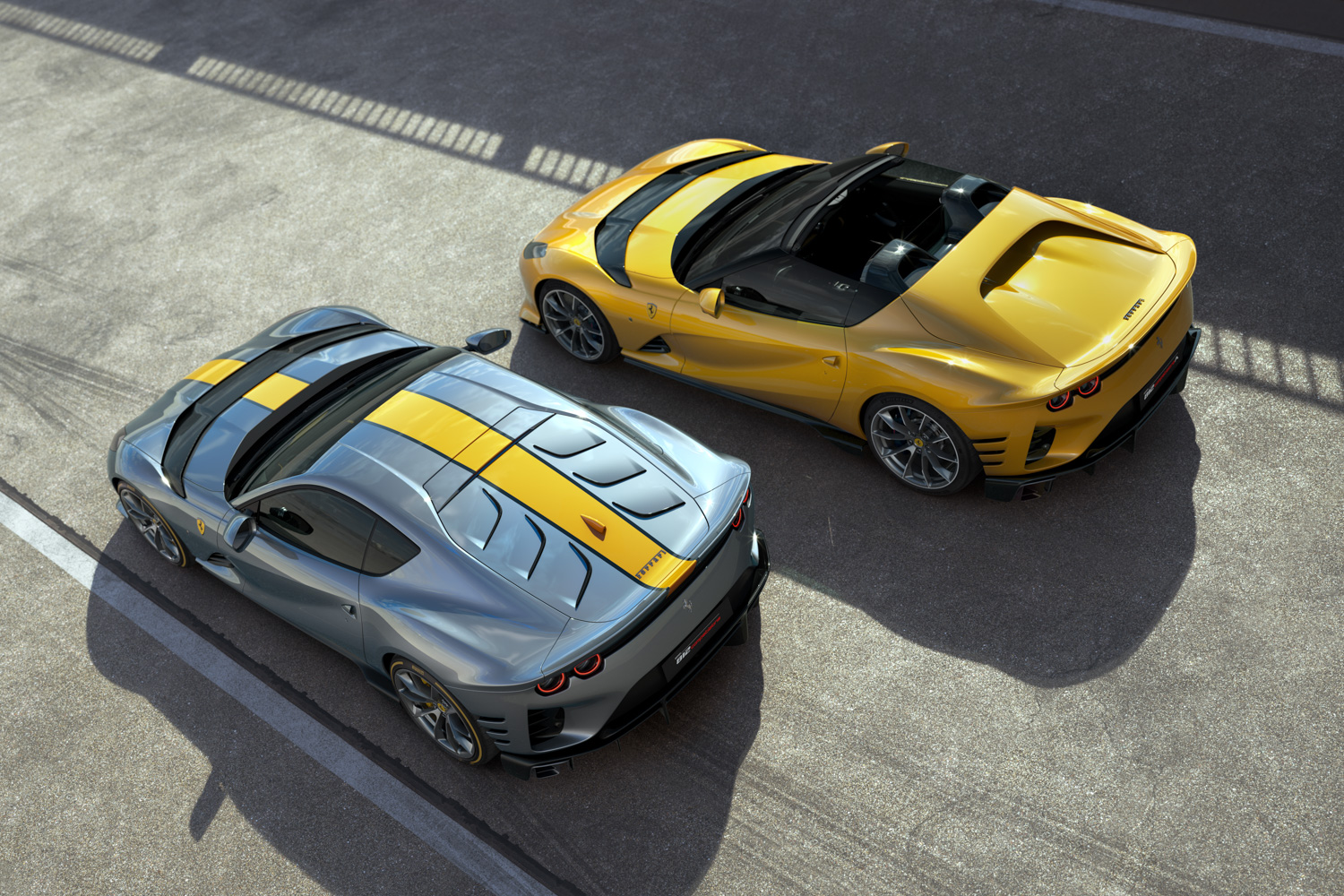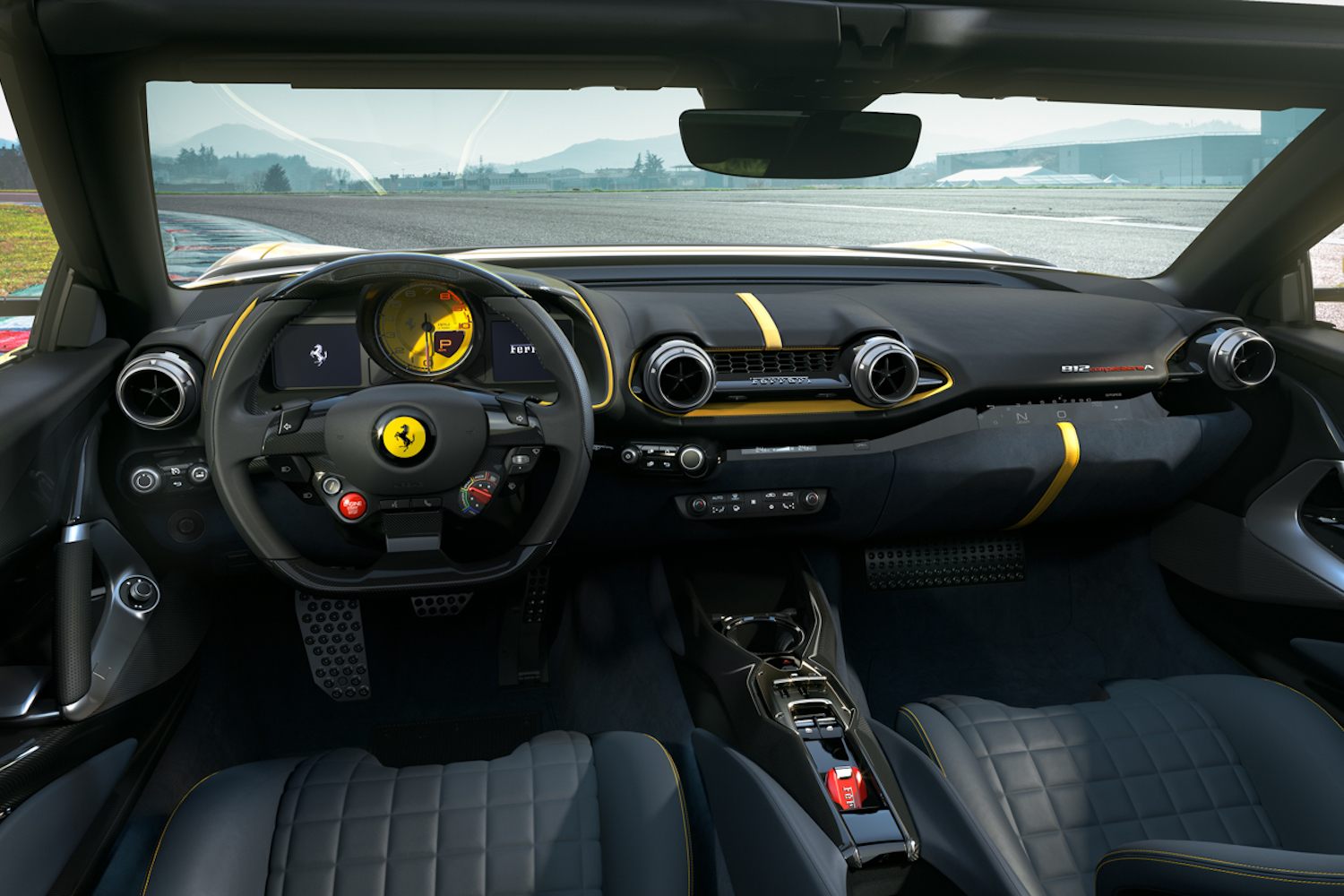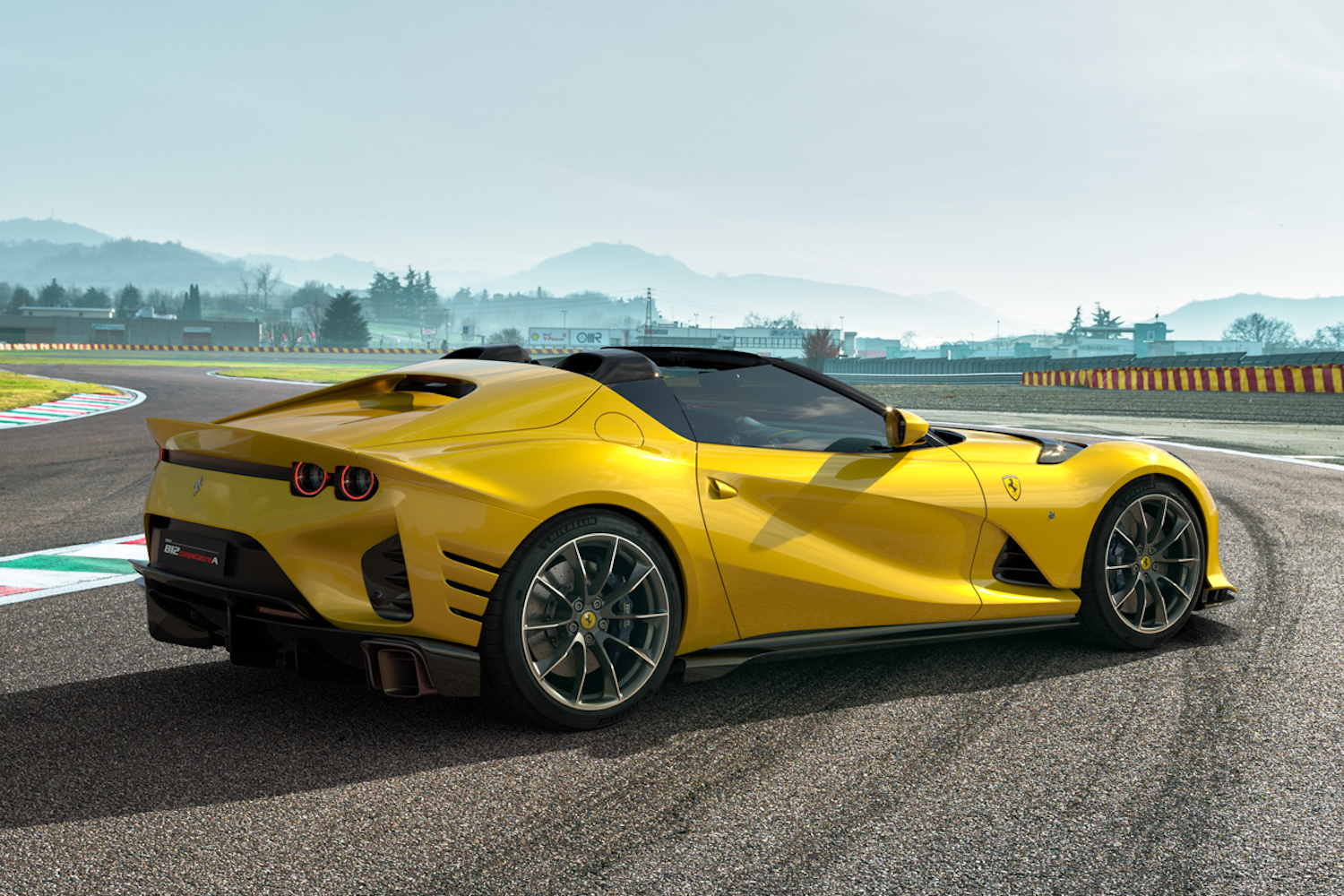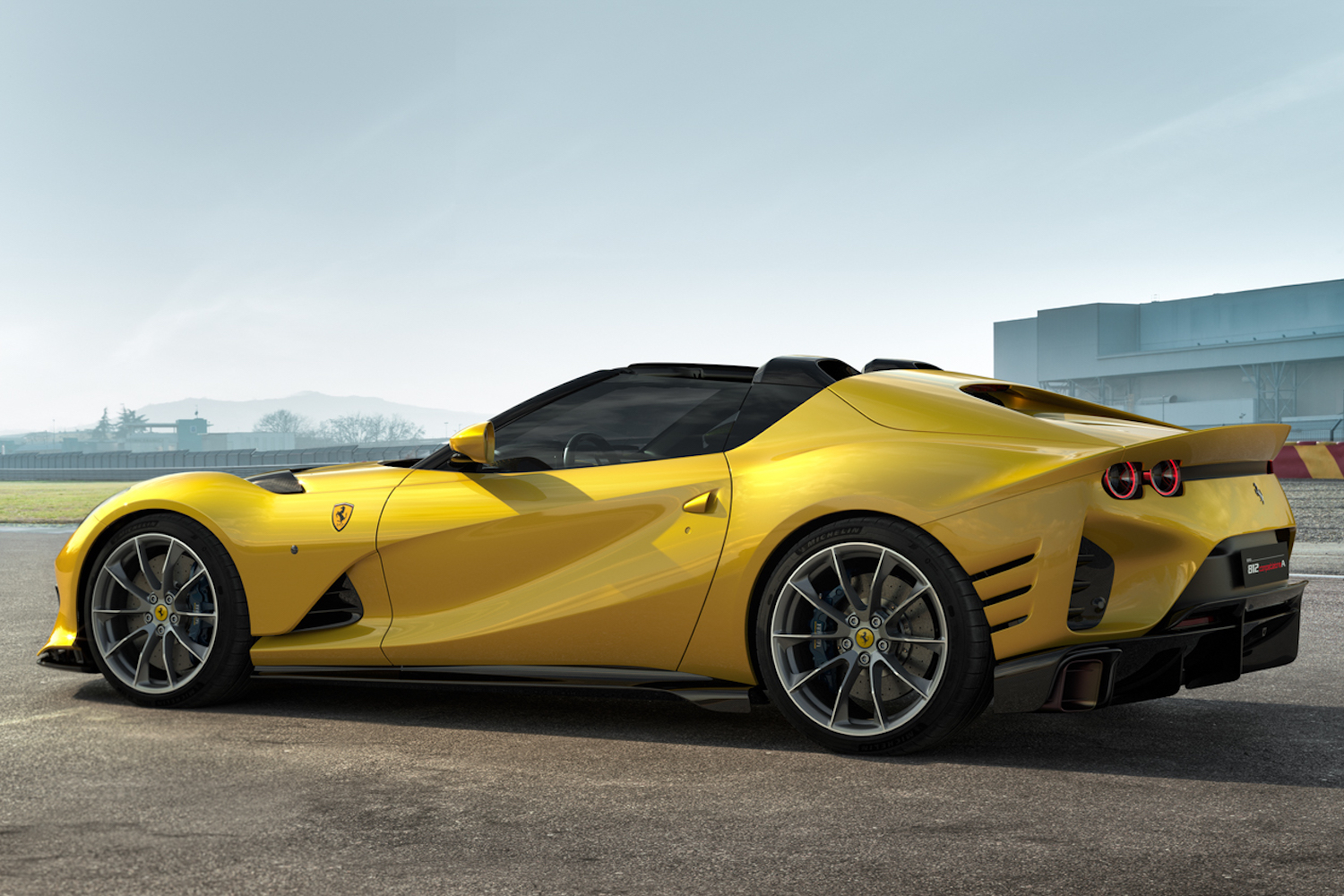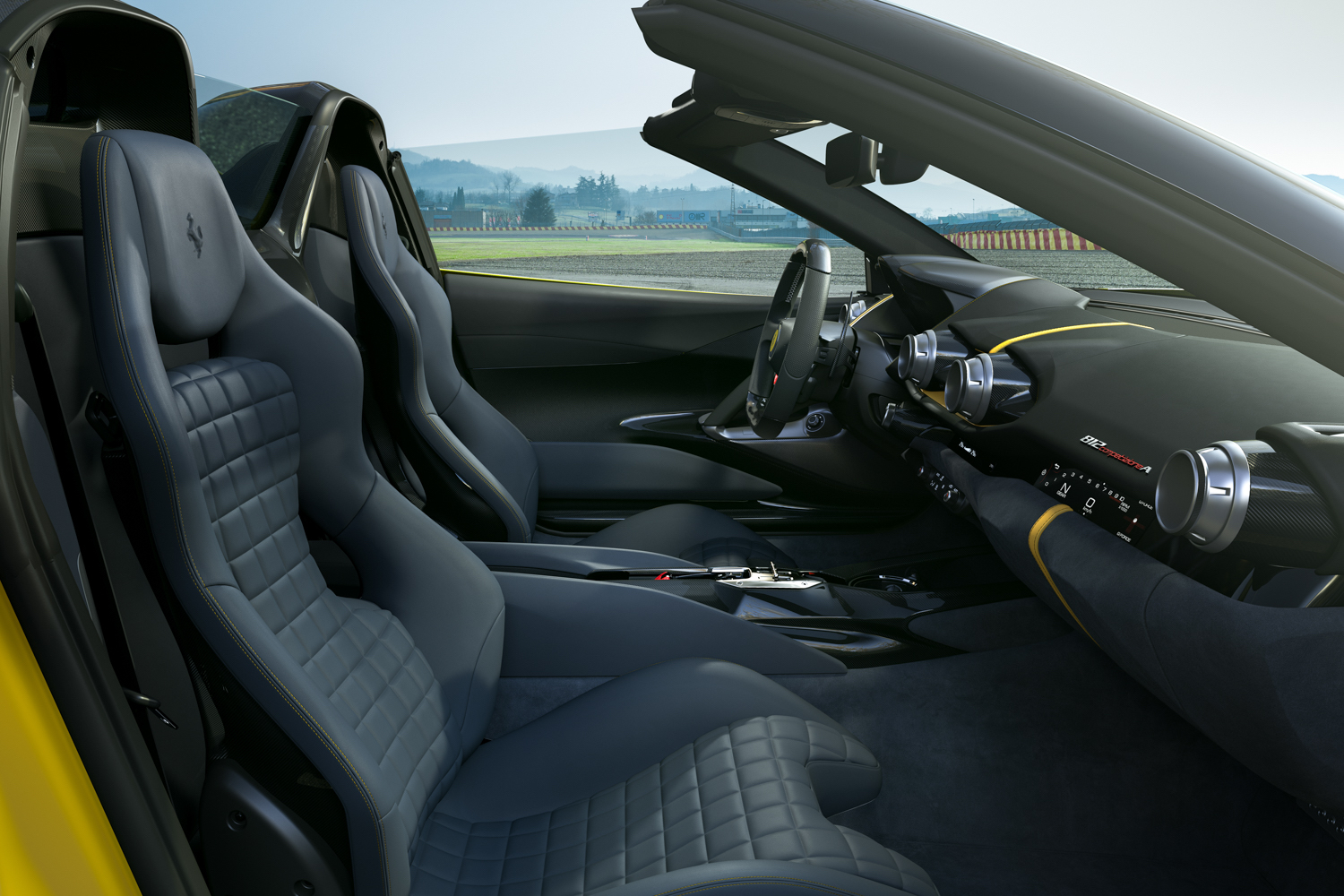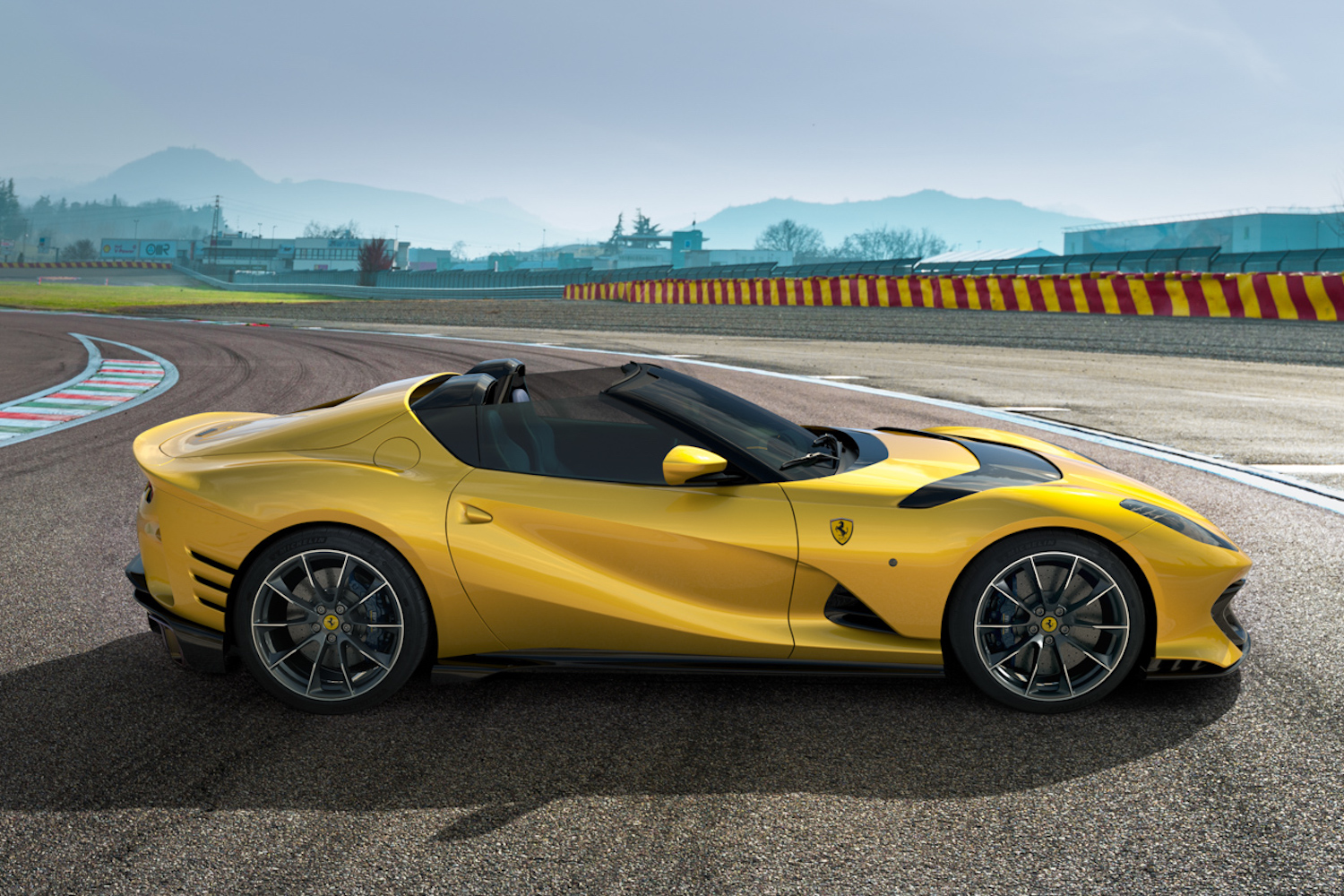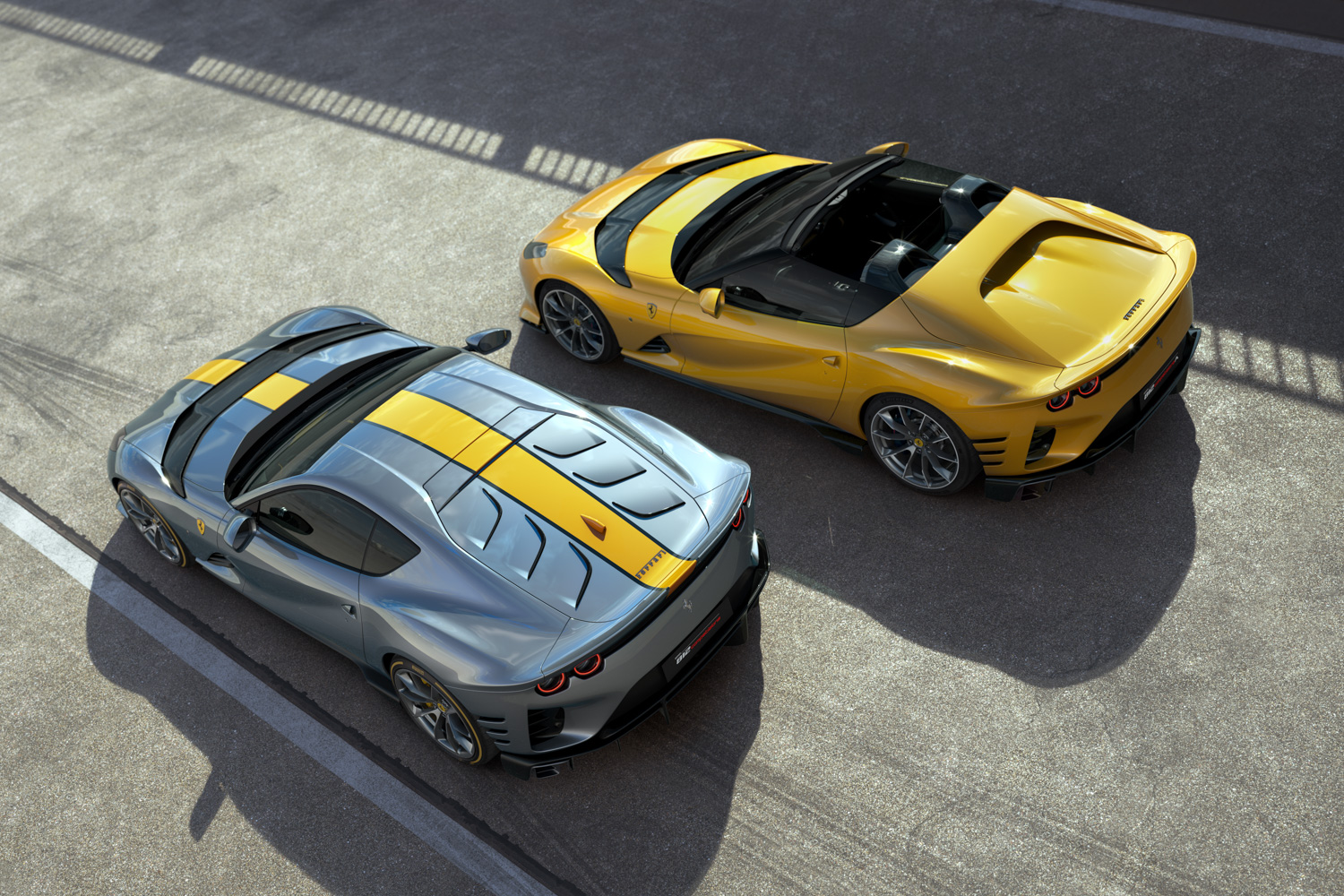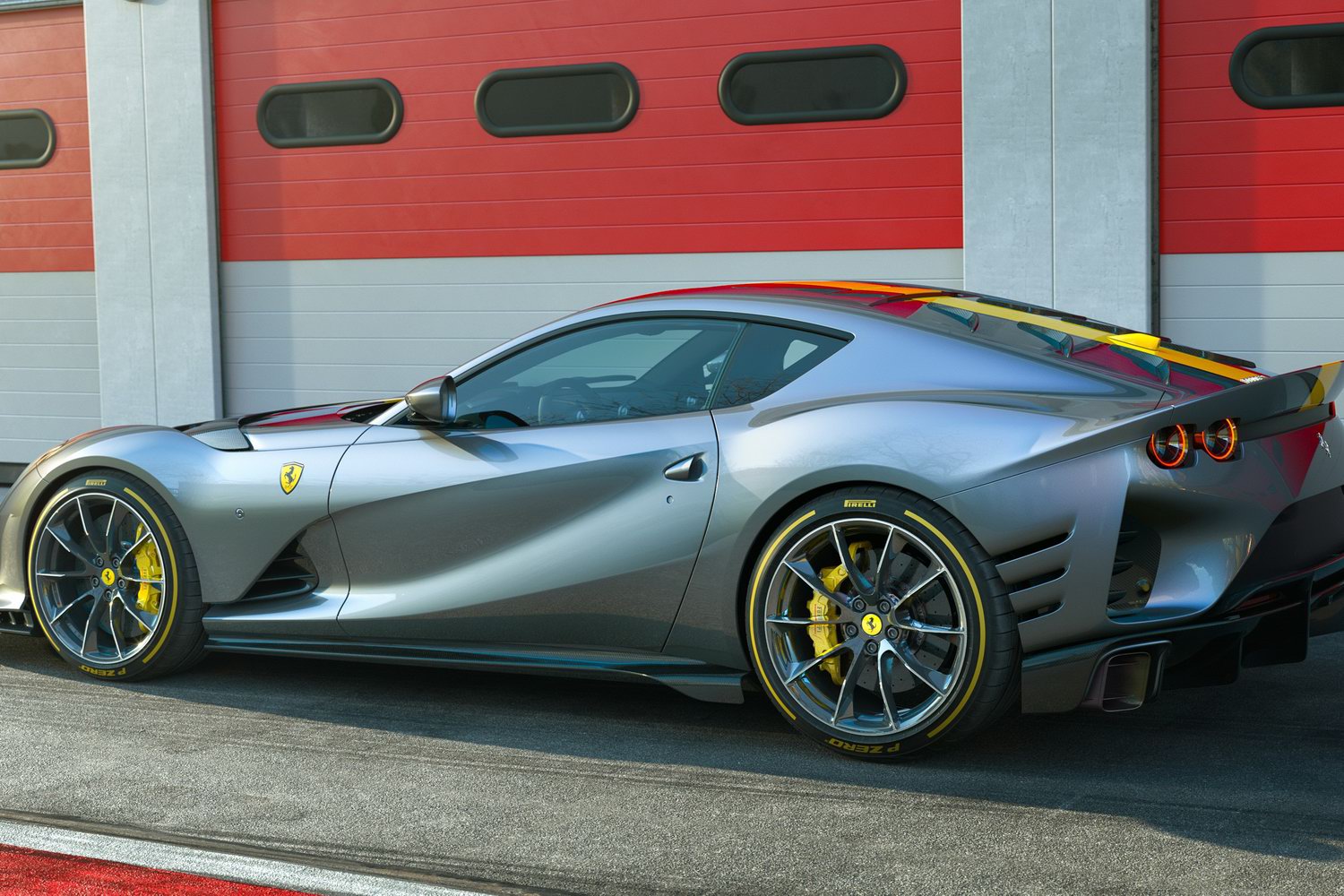We know that Ferrari is planning to build both electric models, and some kind of crossover-SUV, but just in case you were in any way worried that the Prancing Horse was somehow losing its way, Maranello has given us this - the 812 Competizione.
Coupe and Targa-top
Much teased in the past couple of weeks, we now have the official name for Ferrari's new supercar. Well, supercars - emphasis on the plural - because the 812 Competizione will come in both coupe and Competizione A (for 'Aperta', or Open') Targa-top form. We shall pause here for a moment to allow you to imagine the shudder that will run up and down your spine at the sound of an 830hp V12 shouting in at you through an open roof...
All better now? Then let's continue... Launched at Ferrari's famous Fiorano track, the 812 Competizione "is dedicated to a very exclusive group of collectors and enthusiasts of the most noble of Ferrari traditions, which focuses on uncompromising maximum performance" says Ferrari.
The 6.5-litre V12 engine is closely related to that of the aptly-named 812 Superfast, but Ferrari has modified it for its use in the Competizione. Significantly, those mods raise the redline to a colossal 9,500rpm (again, let's take a moment to consider the aural impact of that and a Targa roof...). That rotational speed has been achieved by fitting titanium con-rods (the bits that link the pistons to the crankshaft) which are 40 per cent lighter than those fitted to the old Superfast engine (pffft, that donkey...) along with piston-pins that get a diamond-like carbon (DLC) coating which reduces friction. Less friction means more speed, more efficiency, less wear, more noise, more spiney-tingly-time. There's also a rebalanced crankshaft, which is three per cent lighter than before.
There's more DLC coating for the camshafts and the insides of the redesigned cylinder heads (totally redesigned, apparently, with improved fluid dynamic flows). Even the valve stems have been reworked - using Formula One experience, natch - for smoother, faster action and, therefore, more power.
There's a new air intake manifold, which is shorter and more compact which makes for more power at high RPM. However, the inlet has a variable geometry setup, so the air can be channelled down longer pathways, which improves low-rev response and overall tractability.
There's also a new variable-displacement oil pump, using special low-viscosity Shell Helix 5W40 oil. That can be pumped around the engine faster, again helping to liberate that 9,500rpm redline. The engine has a new injection system, which Ferrari says reduces the generation of harmful particulate emissions, especially on a cold-start, and there's a GPF, or gasoline particulate filter, too (the exhaust system is all new so that the GPF doesn't dilute the ferocious noise). The system can also recognise the octane rating of the fuel being used, and adjust both injection and the multi-spark ignition system to keep the engine at a peak of efficiency.
Dual-clutch gearbox
Both models get a seven-speed dual-clutch paddle-shift gearbox, which can shift its gear some five per cent faster than before. The gearbox also uses a 'HELE' system which is sort of like an Eco mode, but one that keeps up the racket from the exhaust even as it's keeping down fuel consumption and emissions.
Needless to say, the cooling system (with a ten per cent increase in capacity) and the oil system (30 per cent faster flow rates even though it uses a kilo less stored oil) have both been upgraded to cope with all of this.
Up front, the 812 Superfast's dual front air intake has been binned, in favour of a single air duct, which Ferrari says allowed the intake for the engine radiators to be extended sideways as far as the chassis allowed as well as reducing not just weight, but also losses to the intake plenum and thus the combustion chamber, which in turn, improved the overall performance.
There are vents and louvres in the wings and bonnet to allow the heat generated by the mighty V12 to escape. At the same time, brake cooling had to be improved simply because the Competizione is arriving at corners that much faster than the Superfast. In fact, operating temps have been reduced by 30 degrees Celsius, while the mods to the cooling system have shaved 1.8kg off the car's overall weight.
In aero terms, there's a new front bumper, with a deeper scooped area, that leads into the front splitter. There are gaps on top of the wheelarches to reduce pressure over the front tyres, and underneath the body, there are smaller cooling apertures, which leads to smoother underbody airflow and improved downforce. Indeed, the underbody aero pack now extends further forward, F1-car-style, increasing the area of the floor that actually generates downforce. There's a passive aero system, which deflects openings and some wing elements, and which opens at over 250km/h, stalling the front air diffuser, and reducing high-speed drag.
At the back, there's a full-width diffuser, which not only contributes to a 35 per cent increase in rear downforce but which can actually be 'blown' by the engine exhaust, sticking the rear end of the car even tighter down under acceleration. There's no rear window - instead, the 812 Competizione gets a solid, louvred panel which allowed the aero team to more aggressively exploit the airflow over the rear of the car, including little 'vortex generators' which stick up from the bodywork a little (think of them as mini-barge-board from an F1 car) which add ten per cent of rear downforce all by themselves.
The 812 Competizione A doesn't have those vortex generators, nor the louvred rear end, but it does have flying buttresses down the side, which feed air to the rear spoiler, and which feature little slots which help control airflow around the cabin, smoothing it out and making high-speed runs with the roof down less taxing on your wig-glue.
Clever diff with sliding control
Both Competizione models get the latest Side Slip Control (SSC) version 7.0 which brings together all of the control systems developed in-house and uses a shared dynamic control language to integrate the actions of all of the systems to improve efficiency. The Side Slip Control 7.0 spans the electronic differential (E-Diff 3.0), traction control (F1-Trac), SCM-Frs magnetorheological suspension control, brake pressure control when driving on the limit (FDE) available in Race and CT-Off Manettino settings, and the Virtual Short Wheelbase 3.0 which integrates the electric front steering with the electronically controlled independent rear-wheel steering. Got all that? Basically, it means the more you twiddle the little buttons on the steering wheel, the more sideways you go and the louder are your shrieks of delight. Or panic.
Overall, the Competizione is some 38kg lighter than the old Superfast, part of which is down to a smaller 12-volt lithium-ion battery, plus more liberal applications of carbon-fibre. Much of that carbon is in the wheels, which are all-carbon for the first time on a Ferrari, and which contribute 3.7kg themselves. The inside of the channel and of the spokes is coated in a layer of white aerospace-derived paint that reflects and dissipates heat produced by the car's extremely efficient braking system, guaranteeing consistent performance over time even under hard use on the track.
In styling terms, aside from the dramatic louvred rear end (or buttressed rear end for the Competizione A) there's a big transverse blade on the bonnet, which helps to both disguise and improve the effectiveness of the bonnet vents, plus a more aggressive front grille.
Inside, there are slimmed down door panels with 'floating' elements, while in the middle is the new flick-switch gear selector which pays homage to the old chromed 'open gate' manual gearchanges that we just wish Ferrari would bring back.
The Competizione A gets a light carbon-fibre lift-out Targa panel which can be stowed on board, making it a little more practical than some leave-at-home versions of old. Hilariously, both cars come with a seven-year inclusive maintenance and service programme, like some kind of pedestrian Kia.
A Kia that with a V12 that can rev to 9,500rpm. Spine. Tingle.

